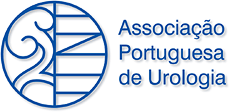Rare Case of Paratesticular Leiomyoma
DOI:
https://doi.org/10.24915/aup.34.1-2.39Keywords:
Leiomyoma, Benign Neoplasms, paratesticularAbstract
Introduction: Paratesticular tumors account for 2% of genitourinary neoplasms. They are benign neoplasms originating from the mesenchymal tissue, of slow and indolent growth, with no definite etiology, and can appear in any tissue composed of smooth muscle. Note the leiomyomas, which are considered a rare neoplasia in this location, so that their diagnosis is often confused with testicular tumors.
Clinical Case: The authors present a case of a 56-year-old male patient admitted to the urology outpatient clinic with a large painless mass in the right testis of slow growth and a 3-year evolution. After further examination, he underwent right inguinal orchiectomy. The histopathological analysis and immunohistochemical profile of the surgical specimen showed a mesenchymal neoplasia compatible with atypical Paratesticular Leiomyoma, with borderline behavior and indolent growth.
Discussion: This is a rare benign pathology whose etiology is frankly unknown and easily diagnosed as testicular origin. Therefore, this report sets out the objective of introducing this entity into medical knowledge in order to collaborate on future approaches.
Downloads
References
Cient Cienc Méd. 2015;18:32–7.
2. Soto Delgado M, Pedrero Márquez G, Jiménez Romero ME, Navas Martínez
MC. Leiomiosarcoma del cordon espermatico: aportacion de dos casos. Actas
Urol Esp. 2007;31:911-4.
3. Birmingham PIR, Sebastian FJN, Gonzalez JG, Barriuso GR, Espadas AG.
Paratesticular tumors. description of our case series through a period of 25
years. Arch Esp Urol. 2012;65:609-15.
4. Sevilla CR, Sanz MA, Manzanera JL, Stanek Z, Martín JA. Leiomioma bilateral
y asincrónico de epidídimo: presentación de un caso. Actas Urol
Esp. 2010;34:483-5.
5. Álcala JA, Arrondo JL, Piédrola IP, Álvarez HZ , Villanueva JA, Martínez AS, et
al. Diagnósticos diferenciales del leiomioma del epididimo. Aportación de un
nuevo caso. Arch Esp Urol. 2001 ;54:823-5.
6. Robbins SL, Cotran R. Patologia – Bases patológicas das doenças. 8ª ed. Rio
de Janeiro: Elsevier, 2010.
7. Krege S, Beyer J, Souchon R, Albers P, Albrecht W, Algaba F, et al. European
consensus conference on diagnosis and treatment of germ cell cancer: a report
of the second meeting of the European Germ Cell Cancer Consensus
group (EGCCCG): part I. Eur Urol. 2008;53:478-96.
8. Krege S, Beyer J, Souchon R, Albers P, Albrecht W, Algaba F, et al. European
consensus conference on diagnosis and treatment of germ cell cancer: a report
of the second meeting of the European Germ Cell Cancer Consensus
group (EGCCCG): part II. Eur Urol. 2008;53:497-513.
9. Khoubehi B, Mishra V, Ali M, Motiwala H, Karim O. Adult paratesticular tumours.
BJU Int. 2002;90:707-15.




